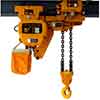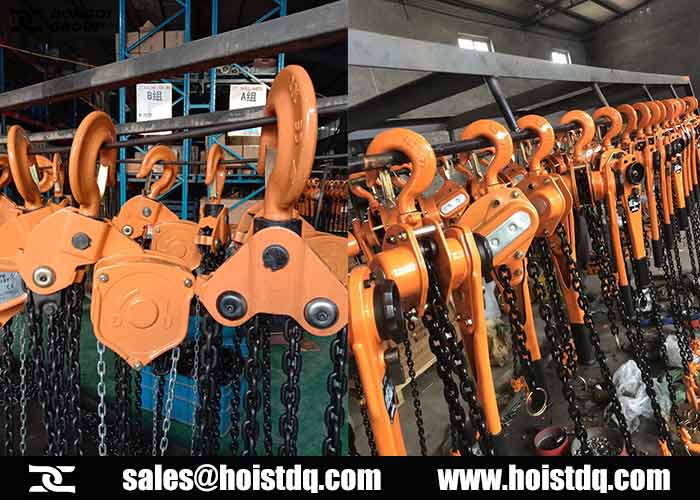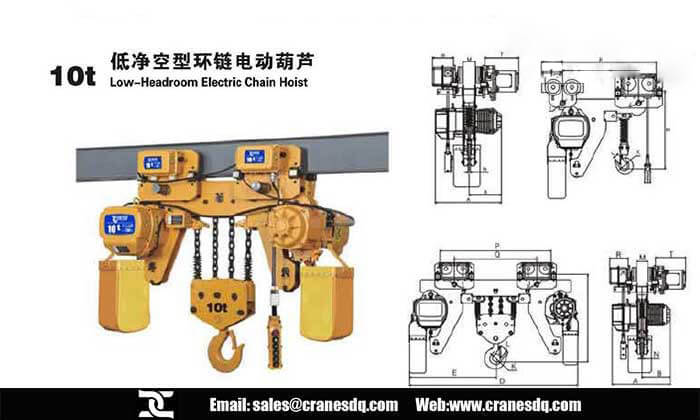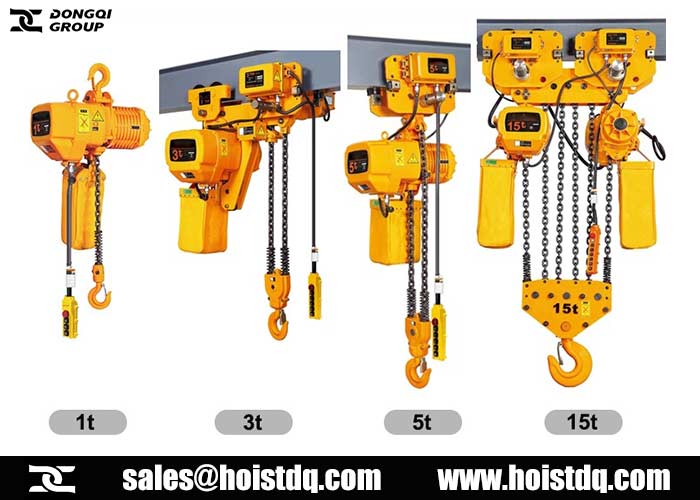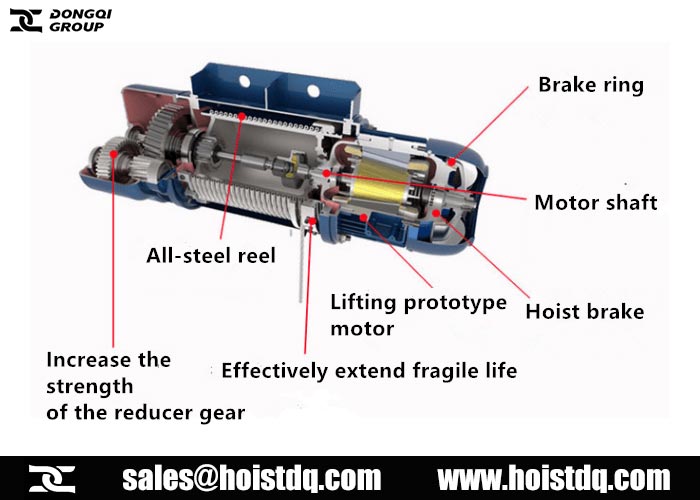Chain hoist
Chain hoists are an invaluable asset for lifting heavy equipment, reducing the effort and manpower required. Chain hoists are available in a variety of sizes, from the small versions found in automobile repair shops to the huge hoists found on bridge cranes and jib cranes. For lifting car engines and shipping containers, manual chain hoists and electric chain hoists soon repay the investment for businesses and homeowners alike.
Chain Hoists Evolution
The history of chain hoists can be traced back as far as the Ancient Greeks and Romans, who developed the principle of using pulleys to shift heavy loads. These cultures developed the familiar ‘block and tackle’ to move and manipulate heavy loads, including huge blocks of marble and ships. This technological advance helped to develop the reputation of these advanced cultures as master architects and engineers.
These ancient machines used wooden pulleys and ropes, but they were the direct ancestors of the familiar chain hoist. Modern technology ensures that high tensile steel and electric motors make the process more efficient, but the underlying principles are exactly the same.
Chain hoists were derived from the rope or wire cable pulley, which operate by multiplying the force applied. Fixed pulleys allow the direction of pull to be changed, and movable pulleys and compound pulleys multiply the amount of force, called gaining a mechanical advantage, by a factor of two or more. However, wire cable pulleys do carry some inherent disadvantages.
- Rope and wire cable pulleys are subject to friction, so adding more ropes to further multiply effort becomes counterproductive as frictional forces increase.
- Pressure must be maintained upon the rope or cable, otherwise the load will slip, undoing all of the good work and posing a threat to safety. Using an electrical winch reduces the chance of this happening.
- Cables and ropes are prone to fraying and breaking, and the sheer forces and imparted velocity can seriously maim or kill.
The chain hoist was a natural development of the pulley system, bypassing these disadvantages. Chain hoists are a much more reliable way of manipulating heavy loads and are now a mainstay in construction, warehousing and a whole range of other industries and homes.
How does a chain hoist work
Chain hoists operate via an endless chain looped over a dual pulley system, adding a mechanical advantage in the same way as a pulley. The hoist incorporates a tooth and ratchet system, which prevents the load from slipping. Whilst chain can also break, it does not ‘whip’ at high velocity as is the case with high tensile steel cable.
For smaller tasks, such as lifting an engine block, manual chain hoists are common, but electric chain hoists are an option for heavy and awkward cargoes. For huge loads, hydraulic hoists and compressed air chain hoists are much more common, and these types are usually incorporated into cranes and jibs. This vertical lifting power of these hoists, coupled with the enhanced safety, makes them the only choice, but the difficulty lies in selecting from the variety of types available.
Types of chain hoists
There are three types of chain hoist. Differential, Lever Ratchet and Hand chain.
The most important thing to remember is that heavy items have mass and mass equals energy. It may not be obvious but you know if you drop something heavy on your foot it will hurt. But it may do more than hurt. An anvil, swage block or milling vise dropped on one’s foot could break numerous bones, disable and cause considerable expense.
Differential Hoists
These use a continuos loop of chain and a double chain wheel at the top with different number of pockets on the two sides. The lower “hook” wheel has grooves to ride on the chain but no pockets. As the chain is pulled around the inner load loop gets smaller or larger by the difference in the number of pockets on the chain wheel (the differential). As the lifting loop gets shorter the hand loop gets longer and vise versa. This is a bit of an inconvenience but the mechanism is as simple as they get.
Lever Ratchet Hoists
These are small portable units with capacities up to 5 tons but the common ones are rated 1/2 or 1 ton. The ratchet handle operates simple gears that pull a short load chain. The load is supported by a disk type friction brake similar to an automotive clutch disk held by a paw and sprocket (ratchet). Lifting rotates the brake/clutch on the ratchet. Lowering releases the pressure on the brake via a multi-lead screw similar to a brake Bendix.
Hand Chain Hoists (standard chain hoists)
These operate like the ratchet hoists above except a chain wheel and loop of hand chain turns the gearing. A brake holds the load and a ratchet prevents the brake from rotating one direction. The chain wheel rides on a screw that loosens the brake when the chain is pulled in the lowering direction. Most have planetary gearing on the brake wheel. Chain hoists are made with straight pulls and compound pulls up to 10 tons or more. Chain hoist are made in steel, portable aluminium housings, spark proof materials and corrosion resistant materials.
Features and Problems
- High quality hoists have ball thrust bearings in the hook to allow rotating the load.
- Load hooks have openings parallel to the back. Properly rated load hooks that have been overloaded will spring open and not be parallel.
- The brakes in industrial duty hoists are large and sufficient to support the load. A two ton hoist has an 8″ to 10″ diameter brake. Small import 2 ton hoists have small 3 to 4 inch brakes that are patently dangerous. They will slip under partial load without operation then due to heat rapidly slip more. These are dangerous junk that have no place in a safe shop.
Safety Factors and Testing
Traditional European and North American load lifting equipment has always had significant safety factors. Most steel crane and hoist parts are rated to be loaded to a maximum of 10,000 PSI at 1.5 to 2 times the rated load. This allows almost all parts to be safely made of mild steel. But then the parts are often made of steels that have five to ten times the strength of mild steel thus having huge safety factors. These 15 to 20 to one safety factors are what allows load lifting equipment to snag or catch a dropping load and safely absorb the inertia of such over loading.
These safety factors should never be assumed or taken advantage of. The basic 1.5 rating is the amount of test load that is periodically put on industrial cranes to test them. Private owners and small shops should also periodically inspect and test their equipment to full or 1.5x capacity and record the test.
Hoist Maintenance and Inspection
Chain hoists are durable and long lasting. The only regular maintenance is inspection, cleaning and lubricating. Chains should be kept clean and rust free. There are only a few bearing points that require oiling but these often require dismantling the hoist. Depending the use this should be done once a year or two. Since these devices have gears it is important to keep them sand and grit free. To clean the gears requires dismantling. Afterwards they should be greased with a tacky high pressure lube like Never Seize or gear grease.
Hoists that slip should be tagged “out of order” and repaired if possible. If not they should be scrapped. Chains that are worn, kinked or stretched should be replaced. Load chains have gently curved sides that when overloaded become straight and sometimes stiff to flex. Stretched, straightened chains should be scraped and replaced. Load chains on hoists that have been stretched will not run smoothly on their blocks. Snapping or popping chains are an indication of overloaded chains.
Choosing the right chain hoist for your application
Chain hoists are designed to handle extreme weight, but they are still dangerous and exceeding the recommended safety margins can be a serious risk to life and limb. Before investing in a chain hoist, make sure that you and your staff are aware of the correct procedures, because most chain hoist accidents are caused by overloading or poor maintenance procedures.
Overloading a chain hoist soon leads to metal fatigue of the chain, erosion or breaking of the teeth and damage to the motor, hydraulic or air system. For this reason, it is essential to buy a hoist with more capacity than is needed, allowing a larger degree of tolerance. Buying a low-budget hoist is false economy, because they are much more likely to fail or need replacing after a couple of years. A hoist with a chain and teeth made from cheap and inferior steel is an accident waiting to happen, so look for the relevant safety certifications, such as CE and GS marks.
Looking for the Best Brand
The next stage is to select a reputable and reliable brand, which can be a little difficult considering the huge range of manufacturers building hoists. You should take your time and consider all of the options, deciding whether you want a manual chain hoist or a powered one.
Look at review sites and forums rather than taking the word of the salesman, looking for how happy customers were with the machinery and the aftercare. Searching for a range of opinions and views makes sure that you will buy a reliable and efficient chain hoist that will give many years of service.
Consult Dongqi for more information on Chain hoist and how to select chain hoist for your application.
Hoisting equipment offering of Dongqi
Various types of hoists are provided by Dongqi Group, the following list will give you a general introduction of Dongqi Hoists. Please contact us to select the right Hoists and lifting equipment for you application.
| The electric chain hoists can be used to handle material with the lifting capacity of 0.5 ton to 35 ton, lifting height of 3 to50m, with the working class of M3 and M4. Hoistdq offers you various types of electric chain hoists to solve you material handling solutions. |
| DHS Series Electric Hoists, | TCH series Chain Electric Hoist | DHP series Chain Electric Hoists |
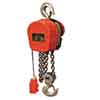 |
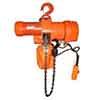 |
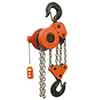 |
|
DHS Series Electric Hoists:1 ton, 2 ton, 3 ton, 5 ton,10 ton |
TCH series Chain Electric Hoist:1 ton, 2 ton, 3 ton, 5 ton,10 ton |
DHP series Chain Electric Hoists:1 ton, 2 ton, 3 ton, 5 ton,10 ton |
More information about Chain Electric Hoist, please click.
Wire rope electric hoists
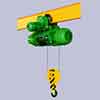 |
Electric hoists and electric hoists- wire rope single speed
wire rope electric hoist single speed 0.25 ton, 0.5 ton, 1 ton, 2 ton, 3 ton, 5 ton, 10 ton, 16 ton |
Please click for more information about Wire Rope Electric Hoist.
Double speed electric hoists
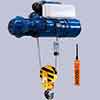 |
Dongqi Hoists can provide you double speed electric hoists with the lifting capacity of 0.25 ton to 32 ton. Wire rope electric hoist double speed 0.25 ton, 0.5 ton, 1 ton, 2 ton, 3 ton, 5 ton, 10 ton, 16 ton |
Please click for more information about Double Speed Electric Hoist.
European electric hoists
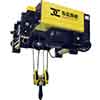 |
European electric hoist is a newly developed material handling equipment with advanced design technology according to the FEM standards, European hoist standards and other regulations. The lifting capacity of the European electric hoist is 1 to 80 tons and the working class is M5 and M6. |
Please click for more information about European Electric Hoist.
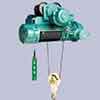 |
Dongqi Hoists can provide explosion proof hoists with the lifting capacity of 0.25 ton to 63 ton, and the lifting height of 1 m to 100m, with the working class of M3. What’s more, single speed explosion –proof hoists and double speed explosion-proof hoists. And, customized explosion proof hoists are available. |
Please click for more information about Explosion Proof Electric Hoist.
Metallurgical electric hoist
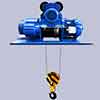 |
Metallurgical hoist offered by Dongqi has a lifting capacity of 1-10ton, lifting height 9-30m, the working class of M6. And customized metallurgy hoists for metallurgical industries are available. |
Please click for more information about Metallurgy Electric Hoist.
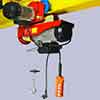 |
Mini electric hoist single hook 100 kg , 125 kg, 150 kg, 200 kg, 250 kg, 300 kg, 400 kg, 500 kg
Mini electric hoist with double hook 200 kg, 250 kg, 300 kg , 400 kg, 500 kg electric hoist The lifting speed of the mini or small hoists can be up to 10 m/min. |
Please click for more information about Mini Electric Hoist?.
Manual hoist and hand hoist
Manual hoist and hand hoist is a type of light hand operated hoisting equipment, which solves the material handling problems with man power, with the features of easy operation, cost-effective, wide application, etc. Dongqi Hoist offers types of manual hoists or hand operated hoists, such as, manual
Manual hoist – Chain type
| CB-1 manual hoist | CB-11 manual hoist, | VC-B manual hoist |
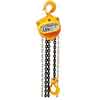 |
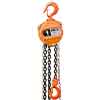 |
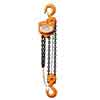 |
| CB-1 manual hoist series:
1 ton, 1.5 ton , 2 ton , 3 ton , 5 ton, 10 ton |
CB11 series manual hoists: 1 ton, 1.5 ton , 2 ton , 3 ton , 5 ton, 10 ton | VC-B manual hoist:
0.5 ton 1 ton ,1.5 ton, 2 ton, 3 ton, 5 ton, 10 ton, 20 ton, 30 ton, 50 ton , |
| CK type manual hoist | SK Series of manual hoist | HS-T type manual hoist |
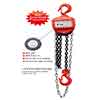 |
 |
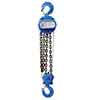 |
| CK type manual hoist 1 ton, 1.5 ton , 2 ton , 3 ton , 5 ton , 10 ton , 20 ton, | SK Series of manual hoist 0.5 ton, 1 ton , 1.5 ton , 2 ton, 3 ton , 5 ton , 8 ton , 10 ton, 16 ton , 20 ton | HS-T series of manual hoist 0.5 ton, 1 ton , 1.5 ton , 2 ton, 3 ton , 5 ton , 8 ton , 10 ton, 16 ton , 20 ton, |
| HS-C type series manual hoist | HS-Z type series manual hoist |
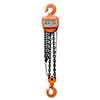 |
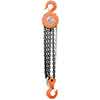 |
| HS C Series of manual hoist 0.5 ton, 1 ton , 1.5 ton , 2 ton, 3 ton , 5 ton , 20 ton, | HS-Z series Series of manual hoist0.25 ton,? 0.5 ton, 1 ton , 1.5 ton , 2 ton, 3 ton , 5 ton ,10 ton , 15 ton, 20 ton ,30 ton, |
Please click for more information about manual chain hoists.
| Manual hoist- explosion-proof type | |
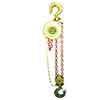 |
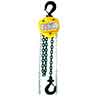 |
| Explosion proof hand hoist 0.5 ton, 1 ton,2 ton, 3 ton , 5 ton , 10 ton, 20 ton | VN explosion-proof manual hoist t 0.5 ton, 1 ton , 1.5 ton , 2 ton, 3 ton , 5 ton , 10 ton, 20 ton, etc |
Please click for more information about manual chain hoists.
Manual hoist and hand hoist – Lever type
| VC-A series lever hoist | VA series hand hoist | VD type lever hoist? |
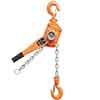 |
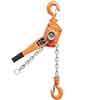 |
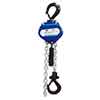 |
| VC-A series manual hoist 0.5 ton, 1 ton, 1.5 ton, 2 ton , 3 ton , 5 ton , 10 ton , 20 ton , 30 ton, 50 ton , | VL lever chain hoist 0.5 ton ,0.75 ton ,1 ton , 1.5 ton, 2 ton , 3 ton, 6 ton, | VD type lever 250 kg, 500 kg , 750 kg, 1500 kg , 2500 kg ,3000 kg, 5000 kg, 60000 kg , |
Please click for more information about leaver hand hoists.
